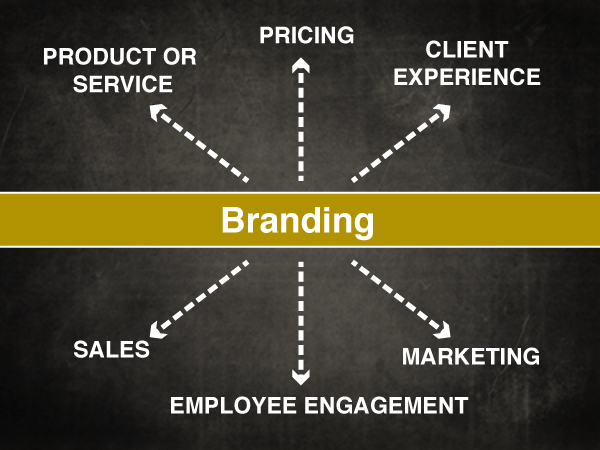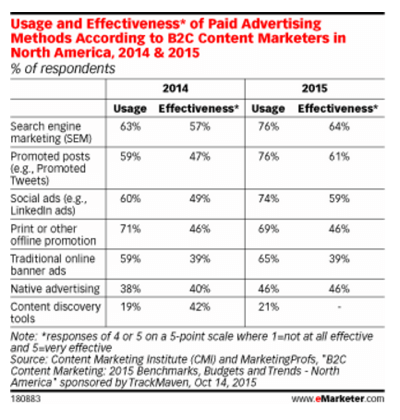Unless you’ve been hiding out in the 19th century, you’re well aware that a brand is comprised of much more than a logo and brand colors. It has a voice, it has influence on sales and culture, and it has a reputation to uphold, so it’s wise to be aware of what it’s saying. In short, branding is everything. But, as a business owner, everything doesn’t mean much if you don’t see how it applies to your company. Much like when someone tells you to fathom a radical statistic, it helps to break it down and associate it to something you give a damn about. Cue this post. We want to dive a little deeper into what everything involves, so you can put it to use and develop a worthwhile brand reputation.
Q: Does your brand have strong viewpoints, or set methods for publicly commenting on controversial topics?
Your Brand’s Public Opinion. Your brand reflects and defines your reputation, and it’s vital that you keep it in line through professional partnerships, stances on current events, and other outlets that demonstrate your views as a brand. Have a crisis communication strategy in place for when things get hairy.
Q: Does a product sell a brand, or does the brand sell a product?
Your Brand’s Influence in Sales. Your brand doesn’t just sell a product or service, it showcases the lifestyle where your product or service plays a primary role. Products come and go, but your brand, if it’s good, lives on. In order to increase your sales, you need to increase your brand loyalty. Humans are creatures of comfort, and if your brand is reliable, customers will buy your products and services throughout their lives.
Q: How did you come up with your pricing structure?
Your Brand’s Influence on Pricing Structure. Pricing is typically understood to be secluded to the realm of revenue management, but this belief is a denial of a valuable branding tool. A well-strategized pricing structure is in fact the most direct marketing element influencing your customers to buy-in.
The basic understanding of price ranges work such that as the demand increases, the price decreases, and vice versa. So then, how do companies get you to pay a premium? By marketing attractive elements of the product or service such as craftsmanship, unparalleled quality or even a compelling backstory can be just the thing a consumer needs to be convinced to pay more.
Your pricing strategy should reflect your brand values, plain and simple. If your brand is rooted in simple, user-friendly products, don’t have a pricing menu the size of a memoir. Likewise, if your brand acts as a partner to your clients, chuck those a la carte or “basic” options that will inevitably leave them wanting more. Even if they like the appeal of quick-fix products or services, don’t let the customer lead their own experience by choosing the cheapest option. Give them the services that honor the partnership marketed by your brand. For example, if you sell 60-minute massages but know the best quality bodywork is realistically achieved in 90 minutes, take that 60-minute option off the menu. You owe it to the integrity of your brand and the satisfaction of your customers.
Q: What is the most effective way to reach potential and existing clients?
Your Brand’s Client Relationship. Have you ever called to troubleshoot a problem with your phone or internet company, only to be “welcomed” by a recording. Then you proceeded to wait on the line for 30 minutes before finally getting a human on the line? That’s a part of their brand that is convenient for the business but not always convenient for the customer. Your brand messaging determines how you communicate with existing and potential customers, so it pays to make sure it’s reliable and approachable. People use social media to connect, not to purchase. So chuck those BUY BUY BUY ads from the stone age, people are smarter now. In order to reach your target audience, you have to talk to them, not at them. Research shows social advertising is becoming the most effective form of marketing, and we’re guessing that has something to do with getting on your audience’s level. Get the full study here. Consider how you use the social media platform. What does your brand do to connect with your audience through these platforms. Engage authentically with your audience by starting real conversations.
Q: How important is work culture for my brand?
Your Brand’s Employee Relationship (Work Culture). We’ve all made fun of culture meetings and workplace bonding activities in the past, but it’s likely those terrible name games and trivia hunts were ripped straight from the archaic “workplace culture” textbook, not born of the company’s established work culture. New Deloitte research has recently shown the current challenge for business leaders to achieve employee retention and consistent work culture. Here’s the deal, due to social media, your business culture is more public than ever. Current or former employees are free to rate and review your culture and plaster it all over the LinkdIn, Facebook, Twitter, EVERYWHERE. Are you listening? People want to feel apart of something, to be empowered and fulfilled in the place they spend 40, 60 or 80 hours of their week. If you want your people to stick around, then the brand-employee relationship needs to be a healthy one.
A strong brand exemplifies the culture that your employees should respect and follow. You know, the big bad list of values and expected communication style among employees. The stronger your brand, the less likely you are to engage in cookie cutter culture activities. People want to enjoy time with their coworkers, or at the very least, not feel imprisoned.
Building An Effective Brand: Start Here
Your product or service could be the most innovative, high quality option on the market, but if your brand isn’t strong, it will be absorbed by someone with a better following. How does your brand hold up? Will it stand the test of time or be swallowed up by a more reputable brand? Find out where you stand and make necessary changes with our guide Why Branding is So DAMN Important now, right now.




Recent Comments